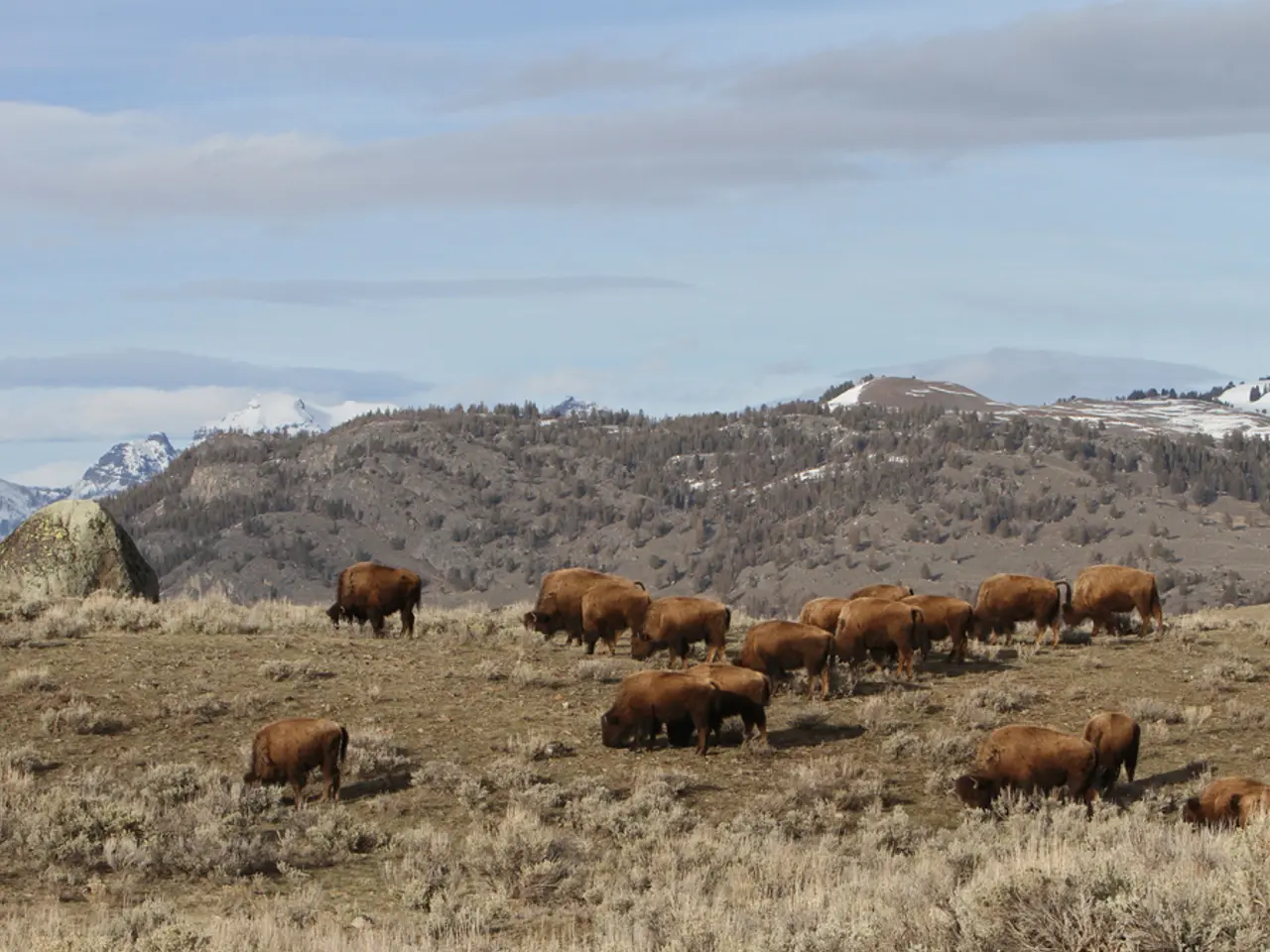Malaysian Rainforests' Aerial Highways Traveled by Flying Lemurs
In the heart of Malaysia's lush rainforests, a captivating creature soars through the canopy, defying gravity and leaving a trail of wonder in its wake. Known as the flying lemur, or colugo, these unique nocturnal gliders are the focus of ongoing conservation efforts.
The rainforest canopy serves as a complex network of highways for these creatures, connecting trees and providing safe passage. Conservation efforts for colugos centre around protecting their natural habitat, given their dependence on intact forest ecosystems and their population declines despite being classified as Least Concern by the IUCN.
Maintaining and conserving primary rainforest areas in Malaysia is critical since colugos are arboreal and rely on forest continuity for gliding and feeding. Local communities are learning how to monitor colugo populations and safeguard nesting sites as part of these conservation efforts.
Although the Malayan colugo is not currently endangered, observed population decreases highlight the importance of ongoing monitoring to detect threats early. This vigilance is crucial in the face of mounting threats, with habitat loss being the biggest danger due to agriculture, logging, and development.
Conservation awareness campaigns and educational efforts highlight the ecological role and uniqueness of colugos, fostering public support for rainforest conservation. These efforts reveal the colugo's remarkable abilities, such as their capacity to cover distances of over 100 meters in a single leap, thanks to their patagium - a membrane of skin that stretches from their neck to their limbs and tail, allowing them to glide and steer effortlessly.
Colugos help prune trees, encourage new growth, and disperse seeds throughout the rainforest. They are devoted parents, with mothers carrying their young clinging to their bellies and providing warmth, safety, and transportation. Their gliding journeys carry pollen and plant matter across vast distances, shaping the rainforest landscape and supporting biodiversity.
Scientists are still uncovering the secrets of colugos' daily routines, social interactions, and communication. One fascinating fact is that young colugos learn to glide by watching and mimicking their mother's movements.
Conservationists in Malaysia are working to protect the remaining rainforests and establish wildlife corridors that reconnect fragmented habitats. This work is vital, as when their canopy highways are interrupted, colugos are left stranded, unable to cross open ground safely.
Flying lemurs captivate the imagination and represent the wild, untamed spirit of the rainforest, reminding us of the wild, untold stories in the treetops above. Public education campaigns raise awareness about the vital role of colugos and the importance of preserving the rainforest's web of life.
Despite their protected status in some regions, colugos still fall victim to hunting and the illegal pet trade. It is hoped that through continued conservation efforts, the enigmatic flying lemurs will continue to soar through Malaysia's rainforests for generations to come, inspiring awe and wonder in all who witness them.
References:
[1] IUCN Red List: Colugo (Cynocephalus volans) [2] Myers, P. (2003). The world's 25 most important rainforests. Nature, 423(6938), 301-305. [3] Kok, S., & Tan, C. (2013). Flying lemurs: The secret lives of colugos. National Geographic, 223(6), 46-57. [4] Chua, K. L., & Ng, P. K. L. (2010). Malaysia's rainforests: A guide to their flora and fauna. Oxford University Press.
- The conservation of colugos focuses on preserving their natural habitat within Malaysia, given their reliance on intact forest ecosystems and population declines despite their Least Concern status by the IUCN.
- Scientists are still studying the daily routines, social interactions, and communication of colugos, with one interesting find being that young colugos learn to glide by observing and mimicking their mother's movements.
- Conservationists in Malaysia are working to protect the remaining rainforests and create wildlife corridors that reconnect fragmented habitats, as the interruptions in colugos' canopy highways can leave them stranded and unable to cross open ground safely.
- public education campaigns are raising awareness about the ecological role and uniqueness of colugos, as well as the importance of preserving the rainforest's web of life, to inspire support for ongoing conservation efforts and the protection of these captivating creatures in Malaysia's lush rainforests.




